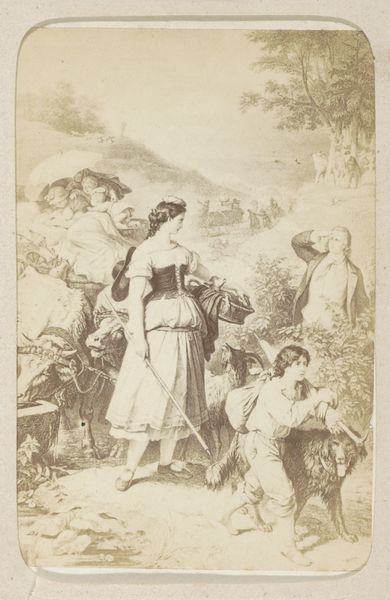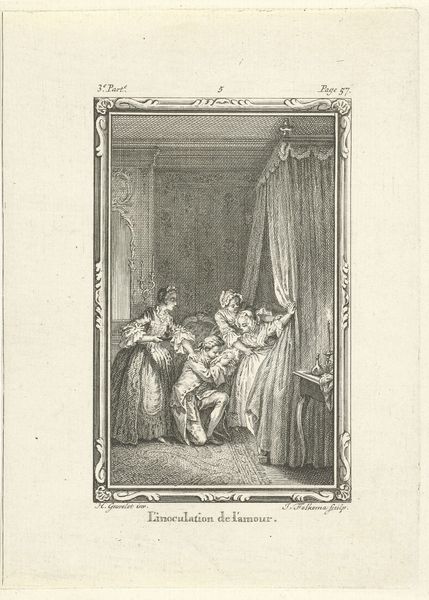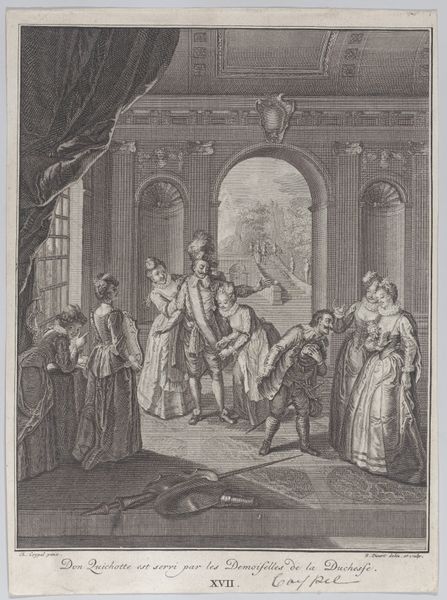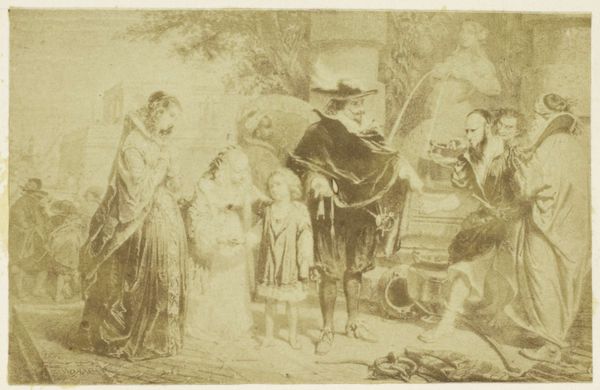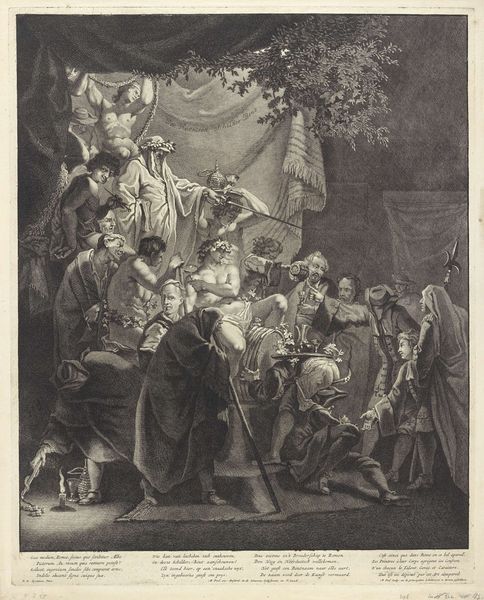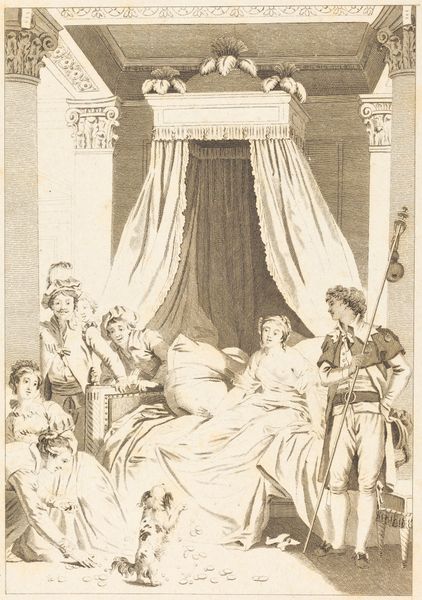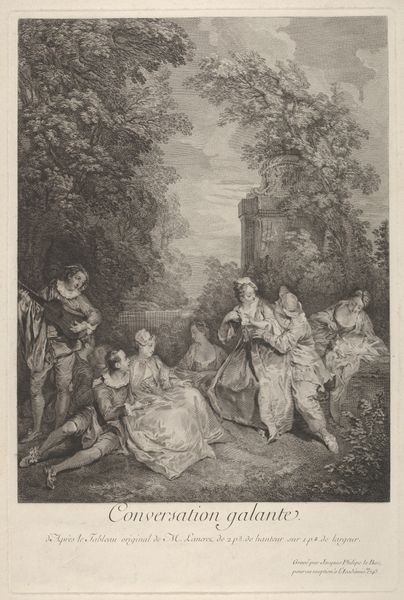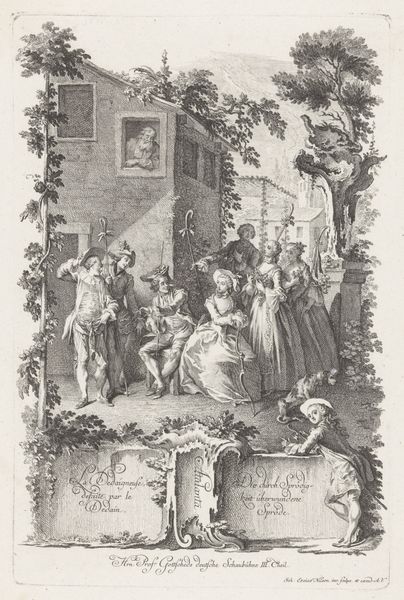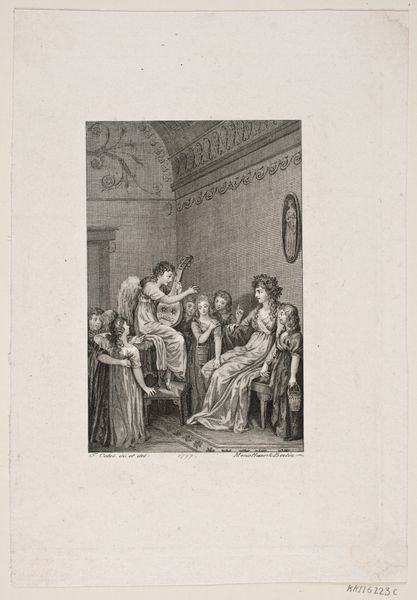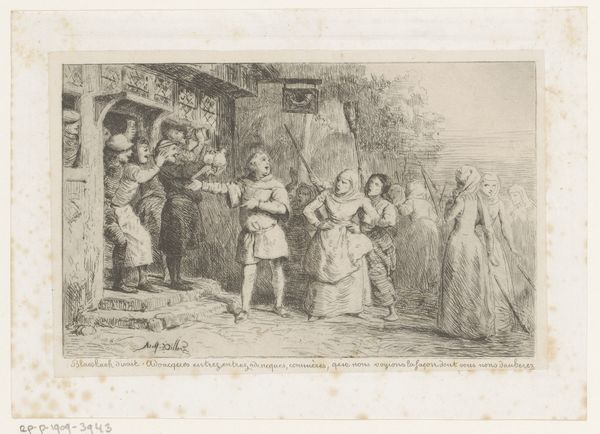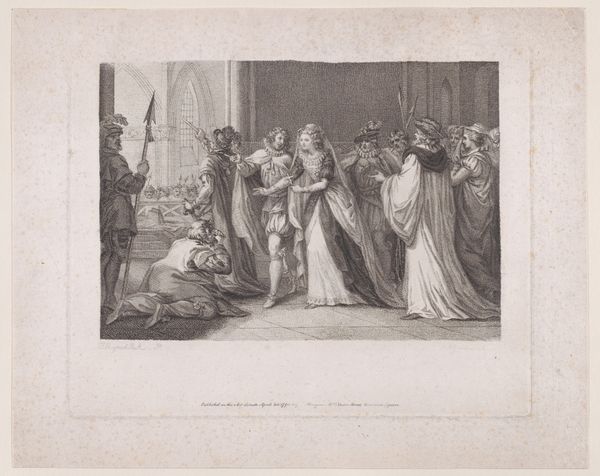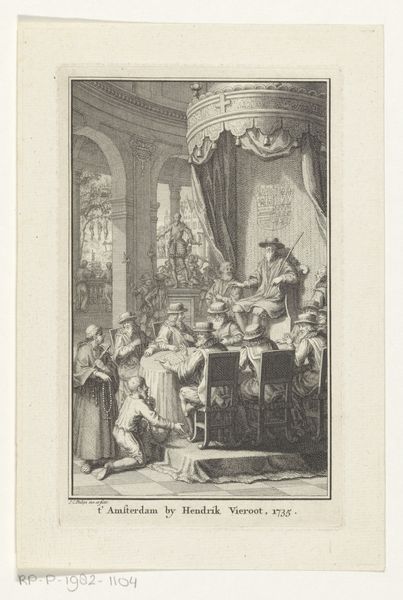
Fotoreproductie van (vermoedelijk) een prent naar werk van W. von Kaulbach: Goethe in Weimar c. 1860 - 1890
0:00
0:00
Dimensions: height 73 mm, width 55 mm
Copyright: Rijks Museum: Open Domain
Curator: Looking at this image, I am struck by its staged quality and the romanticism imbued in every figure. Editor: Right, this gelatin-silver print, likely a photographic reproduction of an earlier artwork – perhaps a print based on a work by Wilhelm von Kaulbach – offers a complex layering of artistic intentions and technological mediation. The inscription suggests it depicts "Goethe in Weimar," a significant subject within German cultural history. Dating roughly between 1860 and 1890, it reveals much about the evolving methods of art dissemination. Curator: The tonal paper gives it this soft, dreamlike effect; almost as if looking back at an imagined past. It also somewhat diminishes its details. Considering it's a photographic print, and possibly reproduced from another artwork, I am thinking of its materiality; a copy of a copy... which in turn makes it lose some value perhaps, no? Editor: Precisely. We see here a tangible artifact of reproduction—a photograph serving to disseminate a potentially pre-existing print which, in turn, depicts a scene. Consider the socio-economic factors driving the production of such an item; making cultural icons accessible to a wider, potentially middle-class, audience through affordable means. Curator: I hadn't considered it that way, I guess this allows for easier circulation... And indeed looking at it as an historical narrative; there is the revered Goethe, centered amongst his admirers, it conveys this carefully constructed image of the artist as a celebrated cultural figure, even during that time. Editor: Absolutely, we must decode this constructed image. It seems very staged: Observe the dynamics of power represented: the male genius, Goethe, receiving admiration in a domestic setting, versus the women who are primarily presented as onlookers or muses. How does the photographic medium itself play into the construction of celebrity and historical narrative during this period? These reproductive technologies were democratizing art in some ways. But simultaneously reifying certain social structures, genders and class dynamics. The medium isn't neutral but actively involved in constructing ideologies. Curator: I see what you mean! Thinking about all those layers it is quite impressive; photograph of a print of a painting depicting an idealized setting. These reproduction processes and social and historical interpretations change how one can see value within art making! Editor: Yes, by understanding this piece’s complex production process and cultural context, we begin to understand it as a marker of evolving technological access to art; which ultimately prompts questions about hierarchies within the art world. Curator: Absolutely; I’ll definitely keep in mind this dynamic between accessibility, consumption and social construction in the future.
Comments
No comments
Be the first to comment and join the conversation on the ultimate creative platform.
